-
Innovative nuclear radiation detector reaches the market
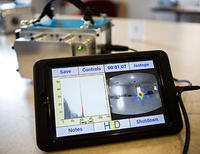
A handheld radiation camera developed by University of Michigan engineering researchers offers nuclear plant operators a faster way to find potentially dangerous hot spots and leaky fuel rods. The new Polaris-H detector lays a gamma-ray map over an image of a room, pinpointing radiation sources with unprecedented precision. At least four U.S. nuclear power plants are using versions of the camera, which is now available commercially through the U-M spinoff company H3D.
-
-
Underground recovery process at WIPP begins
Nuclear Waste Partnership (NWP), the management and operations contractor at the Waste Isolation Pilot Plant (WIPP) for the U.S. Department of Energy (DOE), said it has initiated the first phase of an underground recovery process which will lead to the resumption of nuclear waste disposal operations at WIPP. Initial results show no airborne radioactive contamination in the underground shafts.
-
-
Scotland demands U.K. govt. apology over radiation leak at MoD nuke facility
In 2012 the U.K. Ministry of Defense decided to refuel the nuclear reactor on board Britain’s oldest nuclear submarine, HMS Vanguard, after a test reactor operating at the Naval Reactor Test Establishment at Dounreay, Caithness, in Scotland was found to have a small internal leak of radiation. The test reactor had been shut down after the fault was detected, and both the independent Defense Nuclear Safety Regulator and the Scottish Environment Protection Agency (SEPA) had been informed. It now appears that SEPA did not share the information with the Scottish cabinet, or with Alex Salmond, the First Minister of Scotland. Salmond, in a scathing letter to British Prime Minister David Cameron, has demanded an apology from Camron for “disrespecting” the Scottish Parliament and the people of Scotland and for treating both in an “underhanded” manner by not sharing the information about the radiation leaks.
-
-
Determining long-term effects of West Virginia chemical spill
A chemical mixture called crude 4-methylcyclohexane methanol (MCHM) is used during the separation and cleaning of coal products. More than 10,000 gallons of the chemical leaked from a storage tank near Charleston, West Virginia, and entered the river upstream of a water-treatment plant on 9 January. The drinking water of more than 300,000 West Virginians was contaminated. Water restrictions began to be lifted on 13 January, but residents are still detecting the telltale odors of MCHM. Virginia Tech faculty engineers and students are unravelling fundamental chemical and health properties of MCHM.
-
-
“Encouraged” bacteria cleaning up more effectively after oil spills
Bioremediation is nature’s way of cleaning up. Plants, bacterial decomposers, or enzymes are used to remove contaminants and restore the balance of nature in the wake of pollution incidents. What is surprising is that given the right kind of encouragement, bacteria can be even more effective. Researchers in Norway have achieved surprising results by exploiting nature’s own ability to clean up after oil spills.
-
-
Compact UV laser for biological, chemical detection
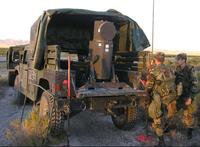
In addition to detecting chemical and biological agents in the field — or at home to protect against mass terror attacks — UV lasers have many other uses. The new class of UV lasers envisioned by DARPA’s Laser UV Sources for Tactical Efficient Raman (LUSTER) program is expected to be of use for a broad range of applications such as point-of-need medical diagnostics, advanced manufacturing, and compact atomic clocks.
-
-
Nuclear waste kept in parking area as N.M. repository remains closed
The federal government’s only underground nuclear waste dump, the Waste Isolation Pilot Plant (WIPP) in New Mexico, remains closed and state environmental officials have set deadlines for the Department of Energy and its contractor-operator of the site to deal with radioactive waste left above ground at the repository. Dozens of drums and containers which have been shipped from federal facilities around the country are being stored in a parking area at the plant, and inside the plant’s waste- handling building.
-
-
Radiation problems on San Francisco’s Treasure Island persist
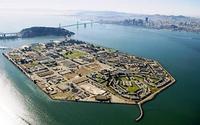
The Army Corps of Engineers created San Francisco’s Treasure Island for the 1939 Golden Gate International Exposition, with plans to turn the island into a civilian airport after the exposition. When the United States entered the Second World War in 1941, the Navy used the island for the Treasure Island Naval Station, where nuclear war training exercises were conducted. The Naval Station was decommissioned in 1993, and parts of the island were transferred to SF for civilian use. Radiation levels on the island are still high, however, and critics charge that the Navy did not do enough to clean the island while downplaying the risks of radiation that still remain.
-
-
Virtual lab for nuclear waste repository research
A nuclear waste repository must seal in radioactive waste safely for one million years. Researchers currently have to study repositories and their processes in real underground laboratories, but a virtual underground laboratory will soon simplify their work.
-
-
Libyan Islamists tried to ship mustard gas to Syrian rebels
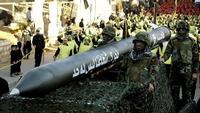
Libyan officials report that they have recently apprehended several members of a Libyan Muslim extremist militia planning to ship chemical weapons to anti-Assad rebels in Syria. Colonel Mansour al-Mazini of the Libya army said that the Islamists had been caught with a container of mustard gas. The gas was confiscated by Libyan soldiers.
-
-
Energy Department suspends work on controversial plutonium reprocessing project
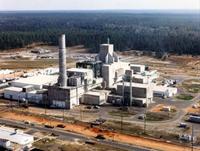
The Obama administration has decided to put on hold its plans to complete construction on a South Carolina reprocessing facility which would convert nuclear weapon-grade plutonium into reactor fuel. The suspension of work on the project is part of the fiscal 2015 budget plan the administration unveiled Tuesday. The project has been hobbled by delays and massive cost-overruns, and experts says security and safety concerns have not been adequately addressed.
-
-
Proposed 2015 budget cuts funding for nuclear nonproliferation programs
The Obama administration 2015 budget proposal shows that the administration will spend less on nuclear nonproliferation initiatives in 2015 than it would in 2014. The budget of the National Nuclear Security Administration (NNSA), the agency responsible for various nuclear weapons and nuclear nonproliferation programs, will be cut by 20 percent, from the $1.9 billon Congress approved for fiscal 2014 — which in turn was a $289 million cut from fiscal 2013 levels — to $1.6 billion in 2015.
-
-
Employees exposed to radiation at nuclear waste disposal site
Thirteen employees at the Waste Isolation Pilot Plant(WIPP),a nuclear waste burial site in New Mexico, have been exposed to radioactive radiation after a leak in one of WIPP’s underground tunnels. Energy Department officials say it is too soon to determine the scope of health risks the employees will deal with. The employees inhaled plutonium and americium, both of which can irradiate the body’s internal organs with subatomic particles for a lifetime.
-
-
Islanders’ radiation worries 60 years after Bikini Atoll atomic test
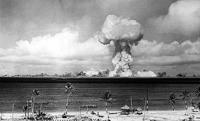
Sixty years ago, On 1 March 1954 the United States tested a 15-megaton hydrogen bomb – a thousand times more powerful than the bomb dropped on Hsroshima —- at Bikini Atoll, part of the Marshall Islands. The explosion vaporized one island, and exposed inhabitants on neighboring islands to radioactive fallout. The United States relocated many of the islanders and spent years – and more than $45 million – to clean up and decontaminate the islands, before allowing the relocated inhabitants to return. Many were forced to leave again, however, after they were found to be exposed to residual radiation. From 30 June 1946 to 18 August 1958, the United States conducted 67 atmospheric nuclear tests in the Marshall Islands.
-
-
Operator of Hanford nuclear disposal site fires scientists who voice safety concerns
The Hanford project in Washington State is the Department of Energy’s (DoE) largest nuclear cleanup project. DoE plans to transform fifty-six million gallons of radioactive sludge, currently stored in underground tanks, into solid glass. Scientists and engineers who work at Hanford have questioned the effectiveness of the required technology, and have voiced serious concerns about safety issues. Two of those who were the most persistent in voicing their concerns about safety have been fired, and a third one has left his job voluntarily.
-
More headlines
The long view
Keeping the Lights on with Nuclear Waste: Radiochemistry Transforms Nuclear Waste into Strategic Materials
How UNLV radiochemistry is pioneering the future of energy in the Southwest by salvaging strategic materials from nuclear dumps –and making it safe.
Model Predicts Long-Term Effects of Nuclear Waste on Underground Disposal Systems
The simulations matched results from an underground lab experiment in Switzerland, suggesting modeling could be used to validate the safety of nuclear disposal sites.
